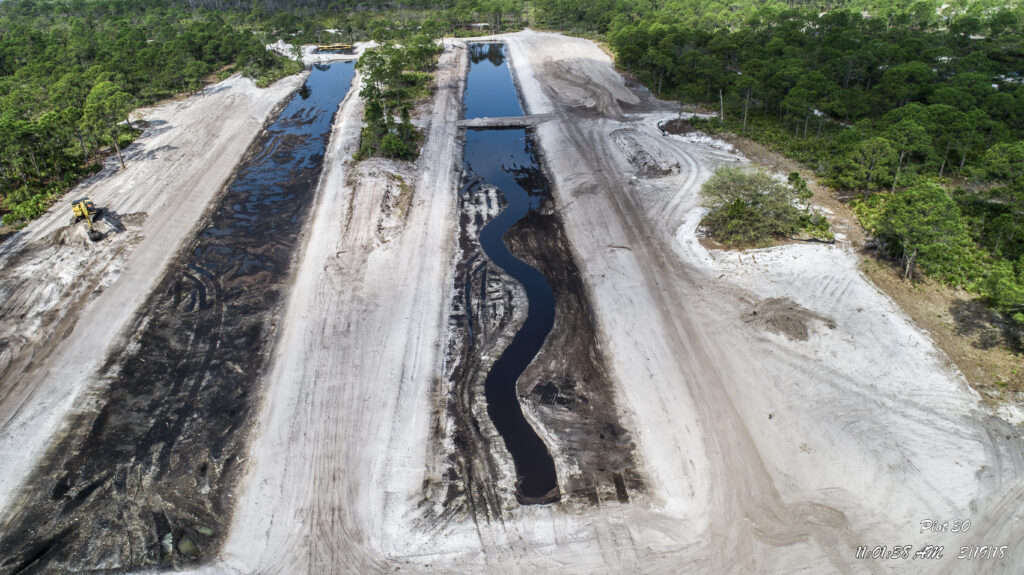Canals in SW Florida during restoration. These canals are home to juvenile tarpon and snook. Photo: SWFWMD
Part 1: Juvenile Habitat Restoration
Habitat restoration is often defined as repairing damage to habitats, usually damage caused by humans. The goal is to bring back natural ecological function to the habitats for the benefit of the species that depend on them. Common examples include restoration of salt marshes and mangrove wetlands that have been physically damaged, such as digging a canal through the wetland, as well as wetlands that have been indirectly impacted, such as by alteration of freshwater flows into the wetland. In both cases, the degradation of the habitat typically causes decreases in the number of species using the habitat and reduced growth and survival of species that remain.
In more extreme cases, habitats have been completely lost; perhaps a wetland was filled in to convert to farmland or to enable building construction. These scenarios present the different challenge of total wetland reconstruction. In the first instance, the wetland can be reconstructed on the original site by reclaiming the farmland and converting it back to wetland. In the second instance, a new wetland might be constructed in an entirely different location as mitigation for the lost habitat, or perhaps constructed in land that remains within the developed area.
These types of habitat damage are what we address in our Juvenile Tarpon Habitat Program with a focus on restoration of habitats for juvenile tarpon and snook. From a broader conservation perspective, restoring habitats important to tarpon and snook also benefits the many dozens of species that also rely on them. In 2020, BTT provided science-based guidance on two tarpon juvenile habitat restoration projects and worked with collaborators to plan another 6 while continuing to monitor the successful Coral Creek restoration project completed in 2019.
Although there are many things we consider when evaluating projects, three of the top items are:
- Has the cause of the habitat damage been fixed? For example, if polluted water flows into a wetland are the cause of habitat decline, the pollution must be fixed before restoration should occur. It makes no sense to put time, effort, and money into restoring a habitat if the restoration doesn’t fix the damaging cause. Surprisingly, restoration that doesn’t address the cause of damage is far too common.
- Is the site in a location that will receive tarpon and snook larvae? Just because it’s a mangrove wetland doesn’t mean it’s a good habitat for juvenile tarpon and snook. The site might be too far from an inlet to receive larvae that were spawned offshore. Or maybe river flows are too strong to allow larvae to move upstream. Location is important.
- Is the site near habitats that will provide protection for the juveniles once they outgrow the nursery habitat? As juvenile tarpon and snook grow they eventually migrate out of the nursery habitats (usually protected backwater areas) and begin to use habitats in more open areas – like mangrove shorelines, lagoons, seagrass beds. Combined, this collection of connected habitats is called the coastal habitat mosaic. It’s important that a juvenile habitat restoration site is next to other healthy habitats. If a site is surrounded by seawalls, for example, the chances that a small tarpon or snook can safely navigate that open water to get to habitat that provides protection are much less than if the fish can move safely down a mangrove shoreline.
Only if potential restoration sites meet these criteria will BTT consider a project.
Stay tuned for Part 2: Mangrove Restoration




